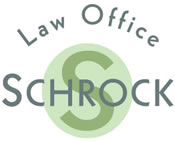There are primarily four ways for settling the personal injury claim. First is by negotiation. Typically most personal injury attorneys will begin by sending a demand letter to the insurance carrier if known, or to the person or business that caused the injury. The demand letter will state what the client claimant wants to settle his or her claim – usually an amount of money requested in compensation. For purposes of this article we will assume that an insurance company is involved. The insurance company will respond with a denial of liability or may respond with an offer of money (usually less than what was demanded). Then the attorney will go back and forth with the insurance adjuster to attempt to settle the claim. Negotiation can take place at any time, even if a lawsuit has been filed, although the insurance representative will often be an attorney if a case has been filed.
The second way is mediation. Mediation involves a neutral person (called a mediator) who attempts to get both sides to agree on a settlement of a matter. Mediation is an excellent method to settle certain claims when both sides are willing to settle, but have difficulty in arriving at a figure acceptable to both sides. Mediation can occur before a case is filed, or after filing. The mediation proceeding itself is confidential, and no findings or determinations are made – it either results in a settlement agreement or it does not. If a case has been filed, a settlement conference with a judge is also available, but I am including this as a type of mediation, because during a settlement conference, the settlement judge is acting as a mediator.
The third way is arbitration. Arbitration is mandatory in Oregon for most injury cases where the amount requested in the complaint is $50,000 or less, unless a judge exempts the case from arbitration. But even when not mandatory, both sides may agree to arbitrate a case. In arbitration, a (hopefully) knowledgeable person, often an attorney, acts as both the fact finder and the judge. There can be more than one arbitrator by agreement, or under certain other situations such as a PIP (personal injury protection) arbitration. The evidence rules and other procedural rules are somewhat more lenient than a trial, but it is somewhat like a trial proceeding without a jury. Under the mandatory arbitration system either side may request a trial in circuit court if they do not like the result. In other cases where the arbitration is by agreement of the parties, it might be final (with no right to appeal except for some very exceptional grounds) or non-binding, in which case either party may proceed to a trial.
And finally, a claim may be resolved by trial. In a personal injury case, either side can require a jury, and most personal injury cases that go to trial are tried before a jury.
The purpose of this article is to clarify the methods and related terminology for settling a personal injury claim. Most personal injury cases are settled through negotiation, either before filing a suit or at some point in the litigation process. An experienced personal injury attorney will be familiar with all of these methods, and will discuss appropriate procedures and strategies with the client to resolve his or her claim.
Brad Schrock has substantial experience in all of the methods described in this article for resolving personal injury claims.
